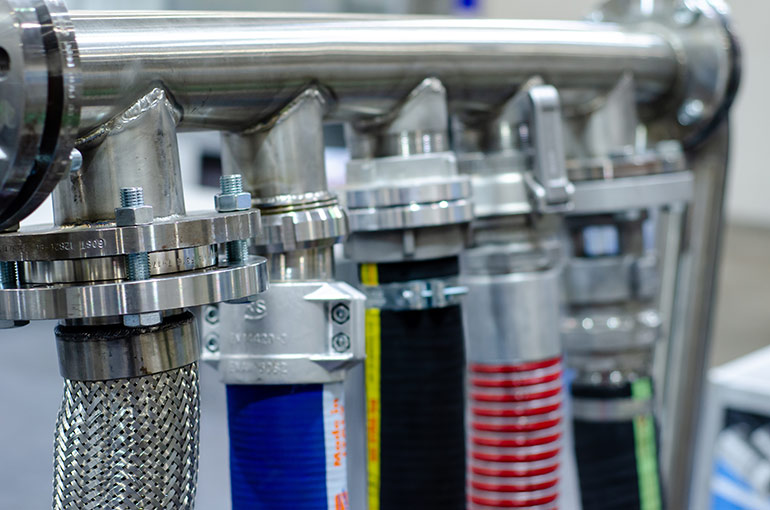By Josh Cosford, Contributing Editor
Technically speaking, hydraulic hose is often also industrial hose, but for the sake of this article, I will define what makes them different in both construction and application. We could call out industrial hose for its use in mobile machinery as well, although I’m not here to make beef, so let’s agree that hydraulic and industrial hose are ideally suited for their respective purposes.
Hydraulics is the transfer of force from prime mover to actuator, and in doing so requires fluid under pressure to travel from the former to the latter. Hydraulic hose must be engineered to withstand not only the everyday working pressure the system demands but also offer an additional 4:1 safety factor. For example, if the machine’s working pressure is 3,000 psi, the hose shall not burst at least 12,000 psi.

To achieve this, the hydraulic hose is constructed of an inner tube surrounded by a high-tensile steel (in most cases) braided or spiral wire layer with a final protective layer on top. For high-pressure and/or large-diameter hose, two or four layers of reinforcement may be used, providing an extra level of pressure resistance.
Hydraulic hose need only operate using one of a few media types, most commonly mineral-based oil, but sometimes fire-resistant water-based fluids or phosphate esters. Buna nitrile works well for the first two options, although EPDM rubber is required for phosphate esters. Beyond the major requirements for pressure and fluid handling capacity, hydraulic hose manufacturers offer special designs for niche industries, such as high flex (short radius) for mobile machinery and non-conductive reinforcement for utilities.
In most cases industrial hose, at large, runs the gambit of all remaining fluid conveyance applications. Should you need to transport coolant, water, chemicals, beverages or any other liquid, there is an industrial hose perfectly suited for the task. When selecting an industrial hose, all the pertinent application details must be considered — pressure, flow, media, and ambient conditions are all factors.

The application requirements sometimes overlap when selecting industrial hose, or conversely, very specific applications require very specific hose. Bulk fluid transfer hose can pump water, oil or sewage from a tanker truck, but special food-safe materials must be chosen for all-important syrup or liquid chocolate transfer. Such a hose is large in diameter with a spiral reinforcement to prevent kinking when bending or collapsing under mild suction.
Sometimes, the hydraulic and industrial hose worlds collide, requiring ultra-specialized hose solutions specific to its needs. High-pressure water jet applications have several specific requirements for its hose: smooth ID for low pressure drop, a high ratio of OD to ID for inherent strength and a high-tensile spiral wire for burst protection. It’s not uncommon for water jet cutting machines to operate upwards of 40,000 psi, a pressure we’ll likely never see in hydraulics.
Hydraulic and industrial hose are close cousins separated by small details of application and construction. This is why manufacturers of one also often manufacture the other. That being said, be sure to select the appropriate hose for its designated purpose — no matter how similar looking from the outside, vacuum hose must never be confused with water jet hose.
Filed Under: Components Oil Coolers, Engineering Basics, Hose & Tubing, Hose Assembly Tips, Technologies